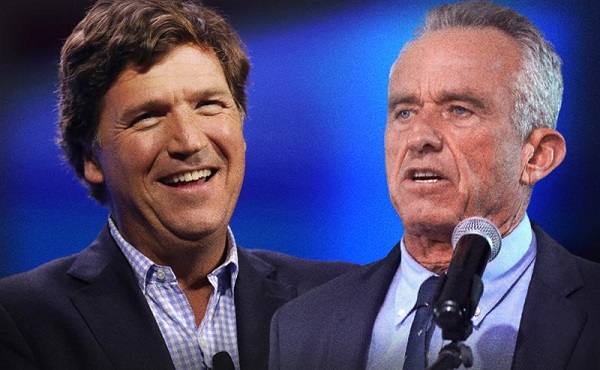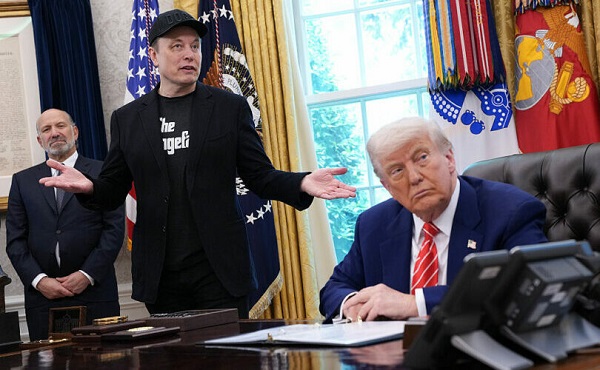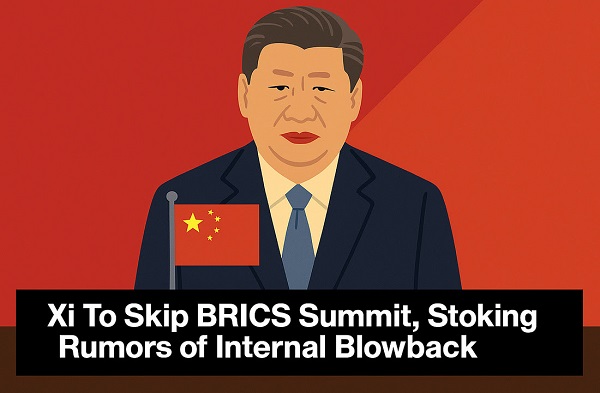Health
AGs Question Pediatricians Pushing Trans Treatment

From Heartland Daily News
In encouraging the use of puberty blockers, cross-sex hormones, and surgical interventions, the AAP claims the treatments are reversible. The AG letter says that is “misleading and deceptive.”
“It is beyond medical debate that puberty blockers are not fully reversible, but instead come with serious long-term consequences,”
Attorney generals from 20 states and legislators from Arizona signed an interrogatory letter to the president of the American Academy of Pediatrics (AAP) about the group’s support of puberty blockers, cross-sex hormones, and surgery for children and adolescents who have been diagnosed with gender dysphoria.
“Often the AAP has exercised its influence responsibly,” states the letter. “… But when it comes to treating children diagnosed with gender dysphoria, the AAP has abandoned its commitment to sound medical judgment.”
The AG letter demanded responses to multiple questions about its child gender policies by October 8, and it stated AAP’s conduct is being reviewed further.
Idaho Attorney General Raul R. Labrador sent the letter, and AGs from Alabama, Arkansas, Florida, Georgia, Iowa, Kansas, Louisiana, Mississippi, Missouri, Montana, Nebraska, North Dakota, Ohio, South Carolina, South Dakota, Texas, Utah, Virginia, and West Virginia signed it, as did the president of the Arizona State Senate and the speaker of the Arizona House.
Sounding an Alarm
The American College of Pediatricians (ACPeds), an alternative medical professional organization, has spent years sounding the alarm on AAP-approved transgender treatments.
ACPeds organized a coalition of health care professionals to create the Doctors Protecting Children Declaration, a document urging organizations to stop promoting what ACPeds calls unethical, harmful practices in treating children with gender dysphoria. Some 82,500 professionals and concerned citizens have signed the declaration.
“We have personally reached out to the AAP leadership and leaders of the other named organizations, asking them to put a stop to this, and have not received a response,” said ACPeds Executive Director Jill Simons, M.D.
“Unfortunately, the leadership of the AAP and other organizations have silenced their very members from engaging in medical discourse when they have put in question these harmful protocols, and they continue to double down on them even as they stand without evidence-based research to support their current positions,” said Simons.
Questioning What’s ‘Reversible’
In encouraging the use of puberty blockers, cross-sex hormones, and surgical interventions, the AAP claims the treatments are reversible. The AG letter says that is “misleading and deceptive.”
“It is beyond medical debate that puberty blockers are not fully reversible, but instead come with serious long-term consequences,” the letter states.
The letter cites the widely recognized Cass Review commissioned by Britain’s National Health Service and published in April.
“The Cass Review was monumental in demonstrating, through the most thorough review of the research and current protocols and outcomes in England, that the current protocols of social affirmation, puberty blockers, and cross-sex hormones do not improve the health outcomes of children with gender dysphoria and in fact there is evidence of causing harm,” said Simons.
“Dr. Hilary Cass’s recommendation has shut down the practice of transitioning kids in England,” said Simons. “Many other European countries are also reversing course and returning to proven medical care, which is supportive mental health and addressing underlying diagnoses.”
Leaked files from the World Professional Association of Transgender Health (WPATH) and a recent statement from the American Society of Plastics Surgeons have bolstered the case against surgical and hormonal trans treatments, says Simons.
APA, AMA Uninterested
A growing number of people are recognizing the validity of the studies, says Dr. Tim Millea, chair of the Health Care Policy Committee and Conscience Rights Protection Task Force of the Catholic Medical Association (CMA).
“Physician organizations such as AAP and [American Medical Association] appear to be uninterested in those studies, at the expense of ongoing harm to Americans that they encourage to enter the ‘gender-industrial’ medical system,” said Millea. “It seems to be true that the leadership of these groups prioritize ideology over science, which is a dereliction of duty in the vocation of medicine.”
Doctors Afraid to Speak Out
Most U.S. pediatricians are members of the AAP. Dissent within the organization has led to the development of alternative professional organizations such as ACPeds. The AAP is too radical for most pediatricians, though they are reluctant to say so, says Simons.
“I speak to countless pediatricians who are members of the AAP who disagree with the AAP’s policies and fully support our efforts to put a stop to these unethical protocols, but they are truly fearful of losing their jobs and the harms that will come to them if they speak out,” said Simons. “I unfortunately speak to pediatricians who have been reprimanded and even fired for speaking out.”
Going to Court
The AAP has been named in multiple lawsuits against doctors and hospitals. Members of ACPeds have served as expert witnesses and submitted amicus briefs to fight the AAP’s gender treatment protocols.
ACPeds also filed a lawsuit against the Biden-Harris administration for its rule requiring doctors to perform gender transition procedures on minors against their medical judgment.
“The American College of Pediatricians is filing this lawsuit against HHS because doctors should never be forced to violate their sound medical judgment and perform life-altering and sterilizing interventions on their patients,” stated ACPeds news release. “Our doctors take an oath to do no harm, but the Biden administration’s rule forces them to violate this oath and perform procedures that are harmful and dangerous to our patients– vulnerable children. What the Biden Administration is calling for is wrong and unlawful.”
Over the past several years, the CMA has been involved in gender intervention cases around the country and plans to file an amicus brief for the Supreme Court case United States v. Skrmetti, scheduled to be heard during the current session.
Changing the Culture
CMA hosted a two-hour panel discussion on September 8, 2024, in which several de-transitioners recounted the harms they suffered from gender transition procedures as minors. The organization wants to make sex-change procedures among children, teens, and young adults unthinkable, says Millea.
“There are three areas of emphasis to accomplish that goal, and two of them are judicial and legislative,” said Millea. “The third is of greatest importance, and that is cultural. The public needs to learn and understand the negative and lifelong risks and complications of gender transition.
“We remain hopeful that doctors will push back against these protocols and follow their oath to do no harm,” said Simons. “There will be a tipping point when doctors are no longer fearful and will speak out.”
Ashley Bateman ([email protected]) writes from Virginia.
Business
RFK Jr. says Hep B vaccine is linked to 1,135% higher autism rate

From LifeSiteNews
By Matt Lamb
They got rid of all the older children essentially and just had younger children who were too young to be diagnosed and they stratified that, stratified the data
The Centers for Disease Control and Prevention (CDC) found newborn babies who received the Hepatitis B vaccine had 1,135-percent higher autism rates than those who did not or received it later in life, Robert F. Kennedy Jr. told Tucker Carlson recently. However, the CDC practiced “trickery” in its studies on autism so as not to implicate vaccines, Kennedy said.
RFK Jr., who is the current Secretary of Health and Human Services, said the CDC buried the results by manipulating the data. Kennedy has pledged to find the causes of autism, with a particular focus on the role vaccines may play in the rise in rates in the past decades.
The Hepatitis B shot is required by nearly every state in the U.S. for children to attend school, day care, or both. The CDC recommends the jab for all babies at birth, regardless of whether their mother has Hep B, which is easily diagnosable and commonly spread through sexual activity, piercings, and tattoos.
“They kept the study secret and then they manipulated it through five different iterations to try to bury the link and we know how they did it – they got rid of all the older children essentially and just had younger children who were too young to be diagnosed and they stratified that, stratified the data,” Kennedy told Carlson for an episode of the commentator’s podcast. “And they did a lot of other tricks and all of those studies were the subject of those kind of that kind of trickery.”
But now, Kennedy said, the CDC will be conducting real and honest scientific research that follows the highest standards of evidence.
“We’re going to do real science,” Kennedy said. “We’re going to make the databases public for the first time.”
He said the CDC will be compiling records from variety of sources to allow researchers to do better studies on vaccines.
“We’re going to make this data available for independent scientists so everybody can look at it,” the HHS secretary said.
— Matt Lamb (@MattLamb22) July 1, 2025
Health and Human Services also said it has put out grant requests for scientists who want to study the issue further.
Kennedy reiterated that by September there will be some initial insights and further information will come within the next six months.
Carlson asked if the answers would “differ from status quo kind of thinking.”
“I think they will,” Kennedy said. He continued on to say that people “need to stop trusting the experts.”
“We were told at the beginning of COVID ‘don’t look at any data yourself, don’t do any investigation yourself, just trust the experts,”‘ he said.
In a democracy, Kennedy said, we have the “obligation” to “do our own research.”
“That’s the way it should be done,” Kennedy said.
He also reiterated that HHS will return to “gold standard science” and publish the results so everyone can review them.
International
RFK Jr. tells Tucker how Big Pharma uses ‘perverse incentives’ to get vaccines approved

From LifeSiteNews
By Matt Lamb
Kennedy defended his decision to fire all 17 members of the Advisory Committee on Immunization Practices, which he decried as a tool used to “rubber stamp” vaccines.
The vaccine approval process is a “bundle of perverse incentives” since pharmaceutical companies stand to make billions of dollars in revenue from it, Secretary of Health and Human Services Robert F. Kennedy Jr. told Tucker Carlson recently.
Kennedy appeared on Carlson’s show yesterday to discuss a variety of issues, including the potential link between autism and vaccines and his overhauling of the vaccine advisory committee at the Centers for Disease Control and Prevention last month.
Twenty years ago, Bobby Kennedy was exiled from polite society for suggesting a link between autism and vaccines. Now he’s a cabinet secretary, and still saying it.
(0:00) The Organized Opposition to RFK’s Mission
(6:46) Uncovering the Reason for Skyrocketing Rates of Autism… pic.twitter.com/g8T8te3kNC— Tucker Carlson (@TuckerCarlson) June 30, 2025
Kennedy began by explaining that Big Pharma has been targeting academic journals to ensure its products receive favorable reviews.
“The journals won’t publish anything critical of vaccines … there’s so much pressure on them. They’re funded by pharmaceutical companies, and they’ll lose advertising and revenue from reprints,” Kennedy said.
Kennedy then noted that Big Pharma will “pay to get something published in these journals,” before accusing industry leaders of pushing drugs on doctors and of hiring “mercenary scientists” to manipulate data until their product is deemed safe and effective.
The entire complex is broken due to the “perverse incentives,” he lamented.
Later in the interview, Kennedy defended his decision to fire all 17 members of the Advisory Committee on Immunization Practices (ACIP) in June, which he decried as a mere tool to “rubber stamp” vaccines.
It served as “a sock puppet for the industry that it was supposed to regulate,” Kennedy exclaimed, citing conflicts of interest for the overwhelming majority of its board members.
This sort of “agency capture” explains the lucrative nature of vaccines, he added.
— Matt Lamb (@MattLamb22) July 1, 2025
Kennedy then summarized the “perverse” process as follows:
First of all, the federal government often times actually designs the vaccine, [the National Institutes of Health] would design it, would hand it over to the pharmaceutical company. The pharmaceutical company then runs it … first through [the] FDA, then through [the] ACIP, and gets it recommended.
If you can get that recommendation you now got a billion dollars in — at least — revenues by the end of the year, every year, forever. So, there was a gold rush to add new vaccines to the schedule and ACIP never turned away a single vaccine … that came to them they recommended, and a lot of these vaccines are for diseases that are not even casually contagious.
Kennedy further pointed to the Hepatitis B shot for newborns as an example of how the industry has been corrupted.
In 1999, the CDC “looked at children who had received the hepatitis vaccine within the first 30 days of life and compared those children to children who had received the vaccine later — or not at all. And they found an 1,135% elevated risk of autism among the vaccinated children. It shocked them. They kept the study secret and manipulated it through five different iterations to try to bury the link,” he said.
“We want to protect public health,” Kennedy explained, but “these vaccines … can cause chronic disease, chronic injuries that last a lifetime.”
-

 Alberta1 day ago
Alberta1 day agoAlberta judge sides with LGBT activists, allows ‘gender transitions’ for kids to continue
-

 Crime1 day ago
Crime1 day agoSuspected ambush leaves two firefighters dead in Idaho
-

 Alberta1 day ago
Alberta1 day agoAlberta Independence Seekers Take First Step: Citizen Initiative Application Approved, Notice of Initiative Petition Issued
-

 Crime14 hours ago
Crime14 hours agoNational Health Care Fraud Takedown Results in 324 Defendants Charged in Connection with Over $14.6 Billion in Alleged Fraud
-

 Health14 hours ago
Health14 hours agoRFK Jr. Unloads Disturbing Vaccine Secrets on Tucker—And Surprises Everyone on Trump
-

 Business3 hours ago
Business3 hours agoElon Musk slams Trump’s ‘Big Beautiful Bill,’ calls for new political party
-

 Business1 day ago
Business1 day agoCanada Caves: Carney ditches digital services tax after criticism from Trump
-

 Business1 day ago
Business1 day agoMassive government child-care plan wreaking havoc across Ontario






